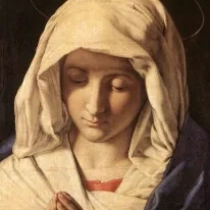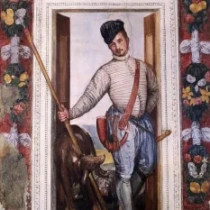 1518 - 1594
mannerism
1518 - 1594
mannerism
Description Jacopo Tintoretto (Robusti)
Jacopo Tintoretto, born in 1518 in Venice, Italy, defied artistic conventions and carved his own indelible path through the Renaissance. His unconventional approach earned him the nickname "Il Furioso," the furious one, aptly capturing the dynamism and intensity of his artistic vision.
Raised in the vibrant atmosphere of Venice, Tintoretto's early exposure to the works of Titian and Michelangelo fueled his creative ambitions. He embraced a bold, expressive style, characterized by dramatic lighting, foreshortened perspectives, and a visceral energy that set him apart from his contemporaries.
Tintoretto's breakout moment came with his masterpiece, "Miracle of the Slave." The painting, infused with a divine luminescence and charged with emotional intensity, established him as a formidable force in Venetian art. His relentless work ethic and prolific output challenged the traditional workshop model, leading him to become a singular force in the Venetian art scene.
Venice's religious and civic institutions became avid patrons of Tintoretto, commissioning him for grand projects such as the "Paradise" in the Doge's Palace. His ability to convey celestial grandeur with an earthy, human touch showcased his mastery of both divine and mundane subjects.
Tintoretto's studio, a bustling workshop where he collaborated with his children, reflected his commitment to artistic innovation. His daughter, Marietta Robusti, emerged as a talented painter in her own right, a testament to the familial dedication to the arts.
While Tintoretto's contemporaries criticized his unorthodox methods, his art resonated with a dynamic era. His "Last Supper" in the Basilica di San Giorgio Maggiore exemplifies his audacious use of space and light. The composition, with its diagonal force, imbues the scene with an electrifying immediacy.
Tintoretto's later years were marked by both triumphs and personal losses. His son Domenico, a skilled artist in his own right, continued his father's legacy. Tintoretto's passing in 1594 left an indomitable legacy, influencing subsequent generations of painters.
Jacopo Tintoretto's art, a fusion of Venetian splendor and unbridled creativity, continues to captivate audiences. His impact on the evolution of Renaissance art, characterized by a fervent spirit and daring innovations, solidifies his place as a distinctive force in the annals of art history.
Gallery
Paintings Jacopo Tintoretto (Robusti)
F.A.Q Section
"The Last Supper" (1594): A masterpiece portraying the Last Supper with a dynamic composition and intense emotional expression.
"Paradise" (c. 1588): A monumental painting showcasing Tintoretto's skill in depicting a celestial scene with numerous figures.




No Comments Yet...